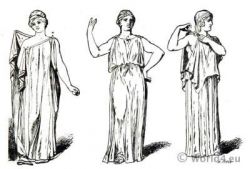-
News
Citytravel in Greece
-

Filopappos Hill
10-06-2013 18:41The Filopappos Hill or the Hill of the Muses is the hill southeast to Acropolis, full of trees and privileged with one of the best views in Athens. On the top of the hill stand the remnants of the monument of Philopappus. The hill is freely accessible to the public anytime of the day in walking distance from both the metro stations of Acropolis and Thissio.
It is an imposing hill high 147 meters that once used as a sanctuary to the Muses. On top of the hill, it is still possible to see the foundations for the surrounding fortified wall dating from 294 BC built by the Macedon King Demetrius the Besieger in order to install his guards. Later, in 115 AD, the burial monument that part of it still stands was erected in honor of Philopappos.
Philopappos was a man of aristocratic and well-connected origins. He was son of the Greek prince of Commagene, Gaius Julius Archelaus Antiochus Epiphanes, born in Samosata, the capital of the Kingdom of Commagene, modern southern part of Turkey. Philopappos means Fond of Grandfather and he probably received this nickname because of his close relationship to his paternal grandfather Antiochus IV.
Under the orders of the Roman Emperor Vespasian, Philopappus’ family was forced to flee off Commagene. Philopappus after spending some years in Rome, moved to Athens where he spent the remainder of his life and became a prominent and respected benefactor of the city. Philopappos assumed civic, political and religious duties and served as an Archon in Athens and had become friends to Greek philosophers and Greek historian Plutarch. As a dedication to honor the memory of Philopappos, the citizens of Athens erected this marble tomb structure. The location of this tomb, opposite the Acropolis and within formal boundaries of the city, shows the high position Philopappos had within Athenian society.
The Philopappos Monument appeared to be intact until recently as in 1436 and recent investigations have certified that architectural parts of the monument have been used for construction of the Minaret in the Parthenon.
In 1954-1957, the architect and visionary Dimitris Pikionis formed a wonderful area for viewing the Acropolis from the hill of Philopappou creating the pathways leading up to the Acropolis, the Areopagus and the Hills of the Nymphs and of the Muses. His desire was that the hill of Philopappos should remain freely accessible alike to Athenians and visitors, as indeed it is up to today.
-
Top bews!
-
Relative articles
















